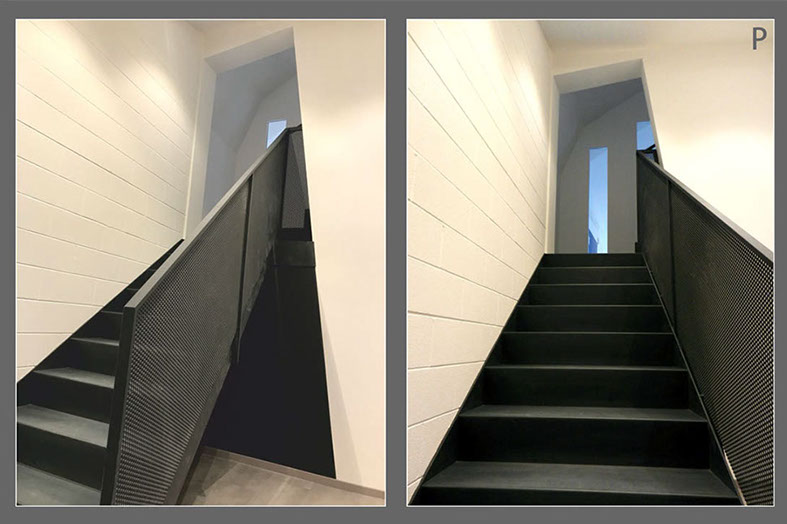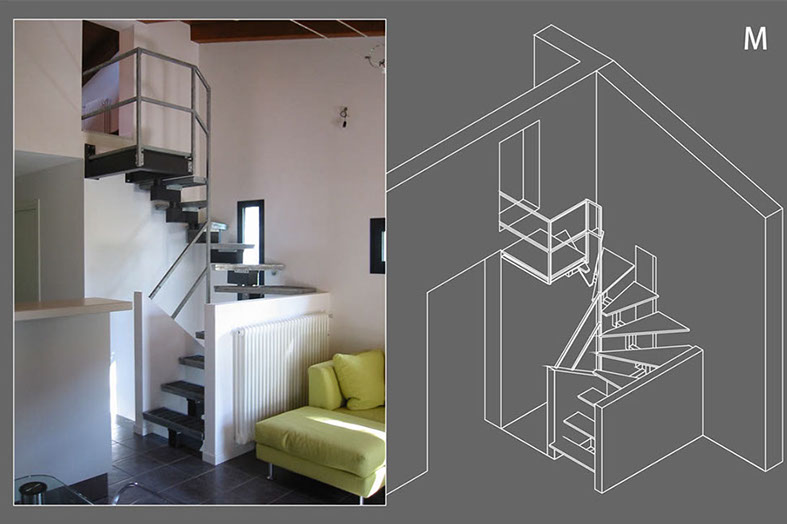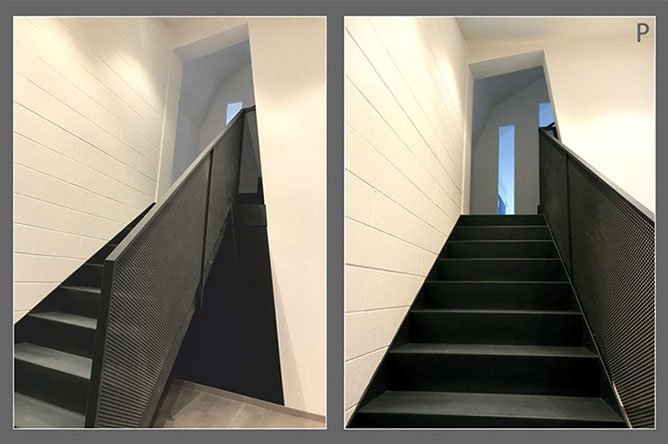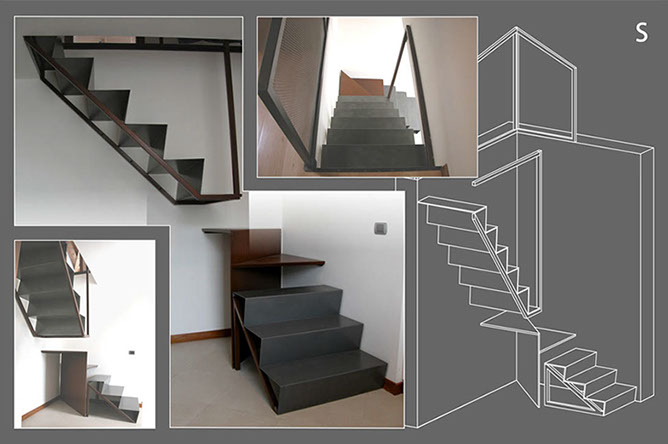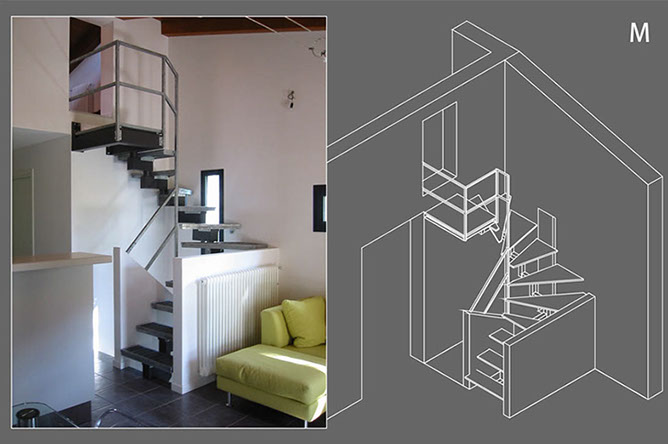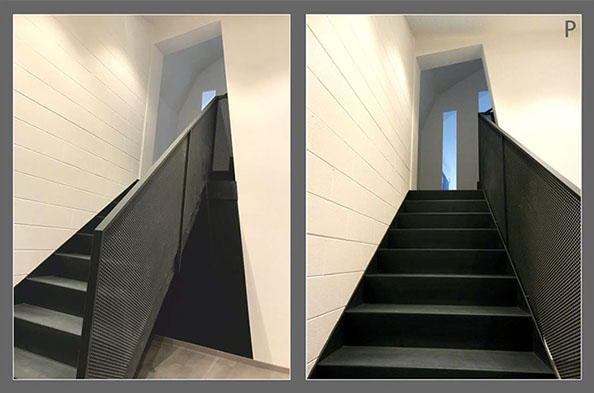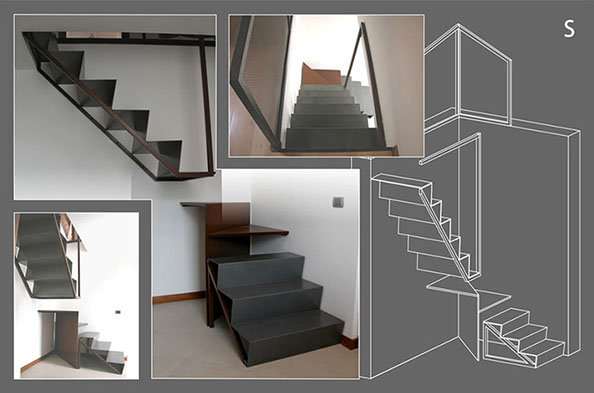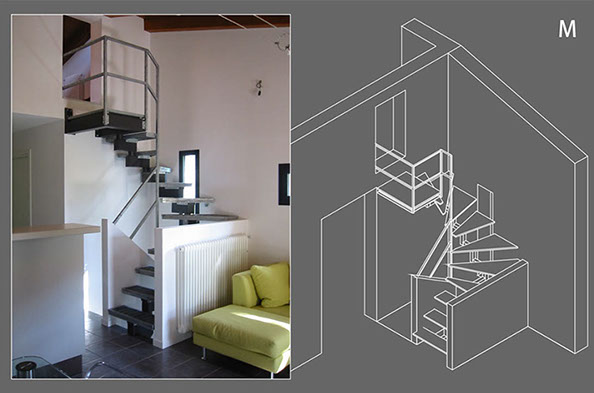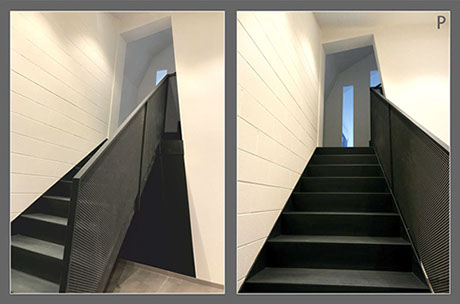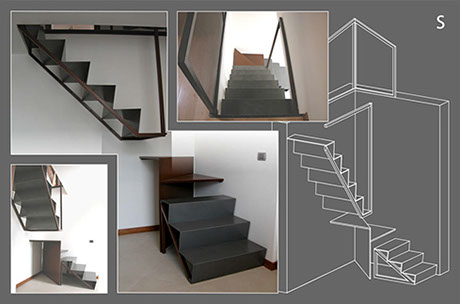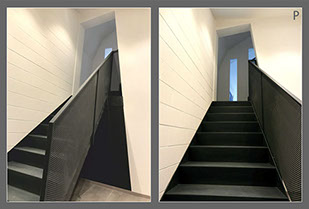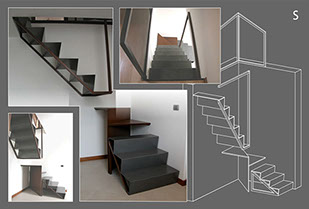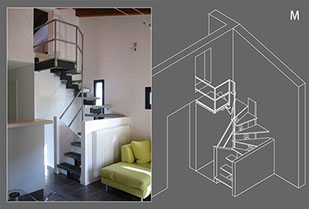DESIGN / Up&Down
3All

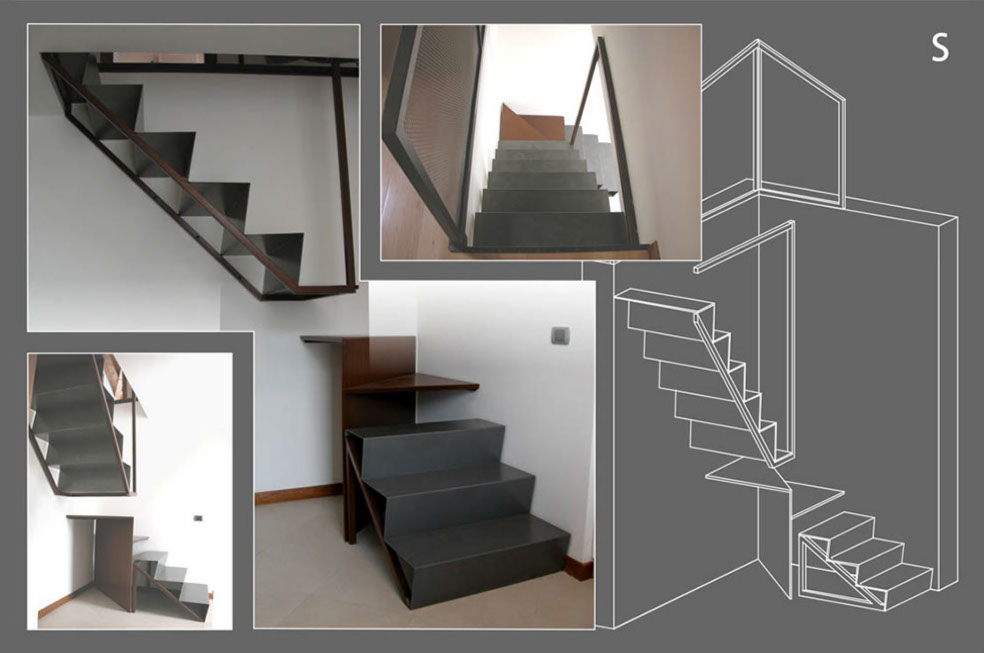
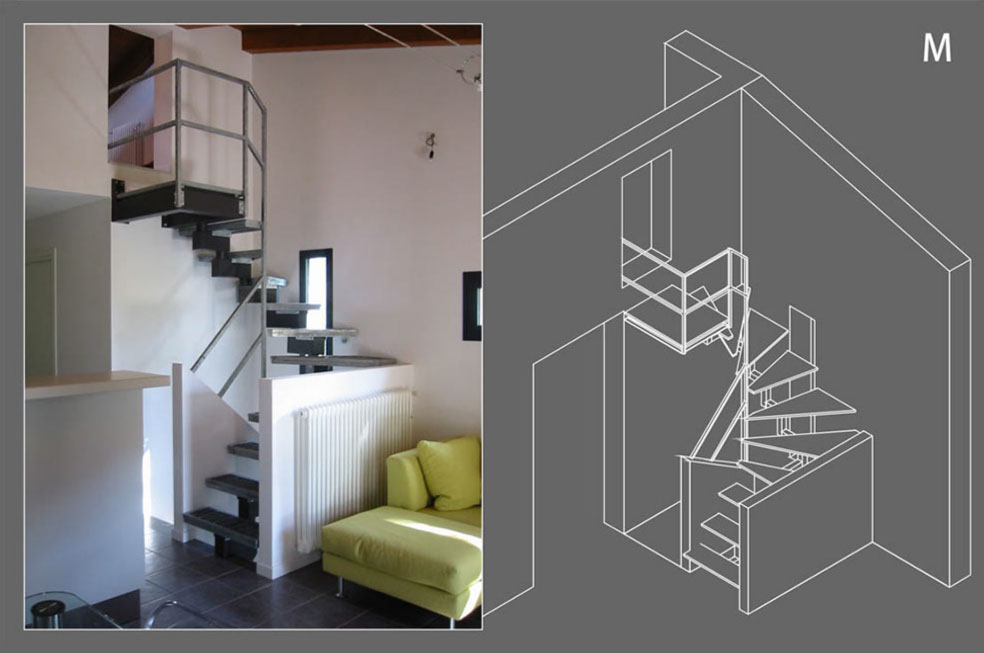



UP&DOWN
ENG
Scala P: the pre-existing constraints on this wall had forced the owners to perform a narrow staircase with a passage hole of insufficient height for an easy passage to the company's management offices. Precisely these constraints become a starting point to create a staircase with an accentuated perspective with an inclined hole that allows easier passage, without having to put your hand on the structures.
Scala S: this staircase is divided into three independent parts: three steps in brushed iron resting on the ground, two sheets of rusty iron for the landing and a suspended ramp in brushed iron joined by rusty iron pipes, anchored to the attic. The aesthetic lightness of this staircase is opposed to its static solidity. The lack of two risers of the staircase at the landing amplifies the division into three pieces.
Scala M: the obligatory passage inserted between two beams and the restrictive measures are the binding parameters for the insertion of a staircase that leads to a bedroom.
ITA
Scala P: i vincoli preesistenti in questa parete, avevano costretto i proprietari ad eseguire una scala stretta e con un foro dall’altezza poco agevole agli uffici direzionali dell’azienda. Proprio questi vincoli diventano spunto per realizzare una scala dall’accentuata prospettiva con un foro inclinato che consente un più facile passaggio, senza dover mettere mano sulle strutture.
Scala S: questa scala viene divisa in tre parti indipendenti: tre gradini in ferro spazzolato appoggiati al suolo, due fogli di corten per il pianerottolo ed una rampa sospesa, sorretta da elementi in corten, ancorata al solaio. La leggerezza estetica di questa scale viene contrapposta alla sua solidità statica.
La mancanza di due alzate in corrispondenza del pianerottolo amplifica la suddivisione in tre pezzi.
Scala M: il passaggio obbligato inserito tra due travi e le misure restrittive, sono i parametri vincolanti per l’inserimento di una scala che porta ad un sottotetto.






